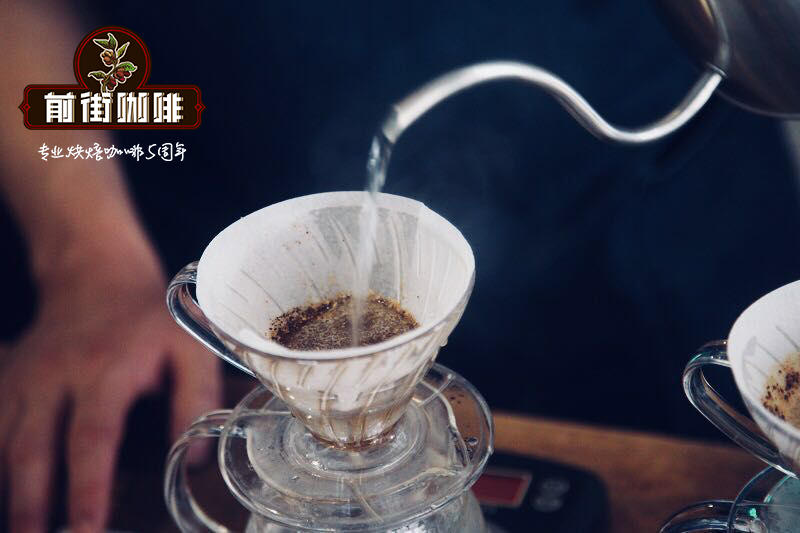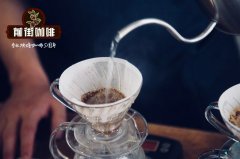How to adjust the Coffee Grinding degree how to adjust the Coffee Grinding thickness

Professional coffee knowledge exchange more coffee bean information please follow the coffee workshop (Wechat official account cafe_style)
Tips for dialing at work
1. Change only one variable at a time.
Do you remember the scientific method? Whenever you want to figure out how one step in your coffee program affects the finished cup, keep the other steps of your wine-making method exactly the same. In this case, the grinding size is a variable. The temperature of the water (should be between 195℉ and 205℉), the dose of coffee, and the technology of coffee should all be the same.
two。 Start with the settings you used last time.
I just started dialing. I don't know where to start. Make your first cup of coffee where you last used it. If the grinder is brand new, the range of grinders set in the middle is a good start. The blade will be extra sharp, so a new grinder may require more testing than an old one.
3. Keep the change between grinding settings small.
After you make a cup of coffee with what we call the "benchmark" setting, grind two more cups of coffee, one slightly thinner than the base coffee and the other a little thicker. Small changes can make a big difference, so you only need to adjust one or two numbers (also known as "steps") on the grinder. For example, if your first cup is ground in step 20, grind the other cups in steps 19 and 21.
4. Determine your own preferences.
Before tasting the coffee, take the time to determine your taste preferences. If you prefer dark baked mixtures, or if you like the bitterness of dandelion green or alcohol, you will be more tolerant of bitterness. Excessive extraction is either difficult to detect, or there may be a higher threshold.
If you like single-origin, especially East Africa, or if you like sour or citric acid foods, you may have a higher "brightness" or acidity threshold, so there is a greater tolerance to unextracted coffee.
5. Taste the coffee and pay attention to the position of the taste in the mouth.
This is the moment you've been waiting for: compare side by side. Slowly, taste the coffee one by one. Pay attention to the position of the taste of coffee in your mouth. We are looking for a coffee with full natural sweetness, which can be increased by proper acidity.
If you notice that the sour taste of coffee is unpleasant, and the taste will hit the corners of your mouth and tongue-if it wrinkles you-then the coffee is not fully extracted and the coffee grounds are too rough.
If you notice that coffee tastes bitter and the taste lingers unpleasantly at the base of the tongue, causing you to drink water to clean your taste buds, the coffee is overextracted and the grounds are too fine.
5. Note: mixed and single origin are expressed in slightly different ways.
In addition to the above description, mixed and single sources show differences in taste in different ways.
The underextracted mixture tastes empty, like an immature fruit. The over-extracted mixture may taste like caramel.
A single country of origin that is not fully extracted also tastes empty, but with a sour taste. Some people think that a single source (depending on the country of origin and baking level) is "sour" or "acidic" anyway. However, while a properly excavated single source may have brighter properties, acidity is only part of the whole, and the natural sweetness of coffee dominates.
A single source of overextraction is like overbrewed black tea, full of bitter tannins.
6. Multiple test batches can be brewed.
If, after your first three samples, you feel like you're getting closer and closer to the best point, but haven't reached it yet, take another batch of tests and use your favorite coffee as a new "benchmark" cup.
7. If you buy a whole bag of beans in a coffee shop, rely on the barista's expertise.
Visual aids can show you the way. Ask a barista (he is not very busy) to grind up the coffee you buy and grind a small piece according to the given method.
8. Be patient; you are developing a new skill.
Our baristas serve our coffee every morning because we want the coffee to taste as clear as possible. You don't have to walk so far at home. Take your pursuit of clarity to where you want to go. However, we guarantee that mastering this basic skill will make your coffee more delicious-just like you have a barista in your kitchen.
END
Important Notice :
前街咖啡 FrontStreet Coffee has moved to new addredd:
FrontStreet Coffee Address: 315,Donghua East Road,GuangZhou
Tel:020 38364473
- Prev

How to adjust the Coffee Grinding degree how to adjust the Coffee Grinding thickness
Professional coffee knowledge exchange more coffee bean information please follow the coffee workshop (Wechat official account cafe_style) tips for dialing at work 1. Change only one variable at a time. Do you remember the scientific method? Whenever you want to figure out how one step in your coffee program affects the finished cup, keep the other steps of your wine-making method exactly the same.
- Next

How to use chemex Coffee maker? how to drink elegance? how to use hand flush?
Professional coffee knowledge exchange more information about coffee beans Please follow the coffee workshop (Wechat official account cafe_style) to hold a party is a balanced move. You want others to feel taken care of, but you also want to visit your guests. It seems that just when you are ready to sit down and join the conversation, it is time to serve coffee. We often make one basic coffee at a time. Here
Related
- Beginners will see the "Coffee pull flower" guide!
- What is the difference between ice blog purified milk and ordinary milk coffee?
- Why is the Philippines the largest producer of crops in Liberia?
- For coffee extraction, should the fine powder be retained?
- How does extracted espresso fill pressed powder? How much strength does it take to press the powder?
- How to make jasmine cold extract coffee? Is the jasmine + latte good?
- Will this little toy really make the coffee taste better? How does Lily Drip affect coffee extraction?
- Will the action of slapping the filter cup also affect coffee extraction?
- What's the difference between powder-to-water ratio and powder-to-liquid ratio?
- What is the Ethiopian local species? What does it have to do with Heirloom native species?

